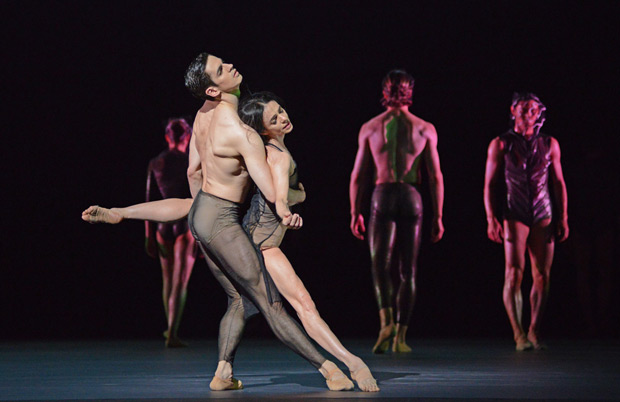
© Dave Morgan, courtesy the Royal Opera House. (Click image for larger version)
Royal Ballet
Woolf Works
★★★★✰
Brisbane, Queensland Performing Arts Centre
Gallery of pictures (Feb 2017, London) by Dave Morgan
29 June 2017
www.roh.org.uk
www.qpac.com.au
It’s been 21 years since Alessandra Ferri danced on an Australian stage. Then she was Tatiana partnered by Steven Heathcote as Onegin. Last night she was Mrs Dalloway and time, it seems, has stood still. In the role of a woman recalling the passions of her past on a summer’s day in London, her expression, vulnerability and ability to capture an audience are just as compelling as they were all those years ago.
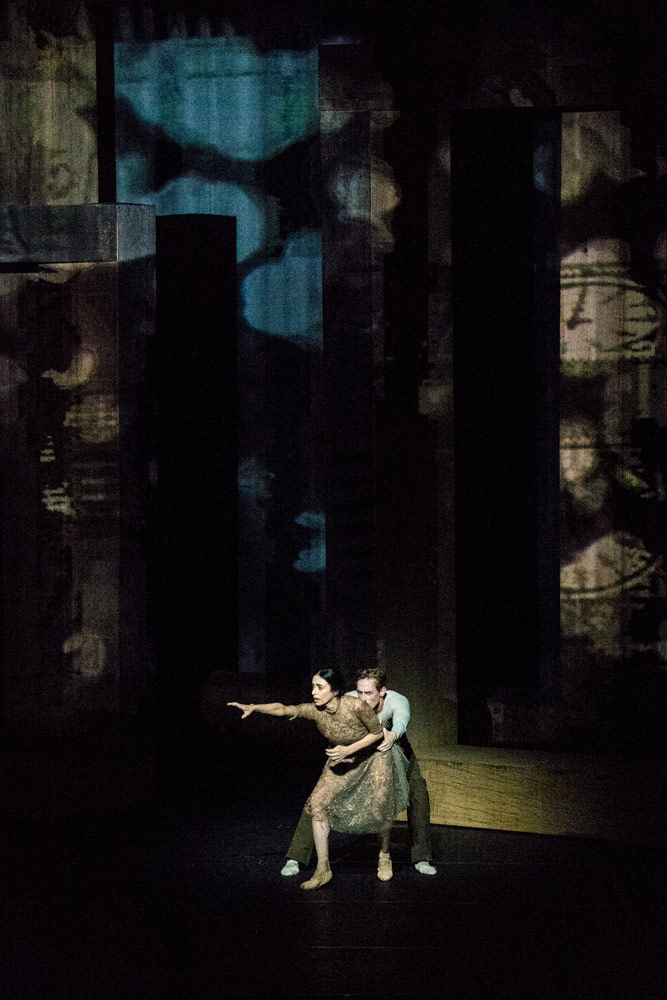
© Darren Thomas. (Click image for larger version)
For the Royal Ballet, there could not have been a better start to their Australian tour than Ferri’s performance as Clarissa Dalloway in the first act of Wayne McGregor’s Woolf Works, the I Now, I Then section. Ferri interprets Clarissa’s yearnings, passions and self-doubt in the same manner as they’re expressed in Virginia Woolf’s novel. Intertwining the past with the present, the first act of Woolf Works is as close as a dance work can be in its interpretation Woolf’s literary style, known as a ‘stream of consciousness’ in which multiple thoughts run through the protagonists’ minds as the narrative clicks from one character to another.
In McGregor’s staging each character moves into and out of Clarissa’s memories as they weave their way around sturdy, revolving wooden frames that act as gateways between each encounter. The frames are lit by Lucy Carter’s moody greens and brilliant orange, and act as screens for Ravi Deepres’ projections of London streets and houses. Each revolution of the frames is a marker for a new interaction between Clarissa and the men and women who shaped her life, her husband, Richard, her friend and lover, Sally, whose kiss had been “the most exquisite moment” in her life, her former lover, Peter, and the hallucinatory war veteran, Septimus, his wife, Rezia, who in the novel she never met.
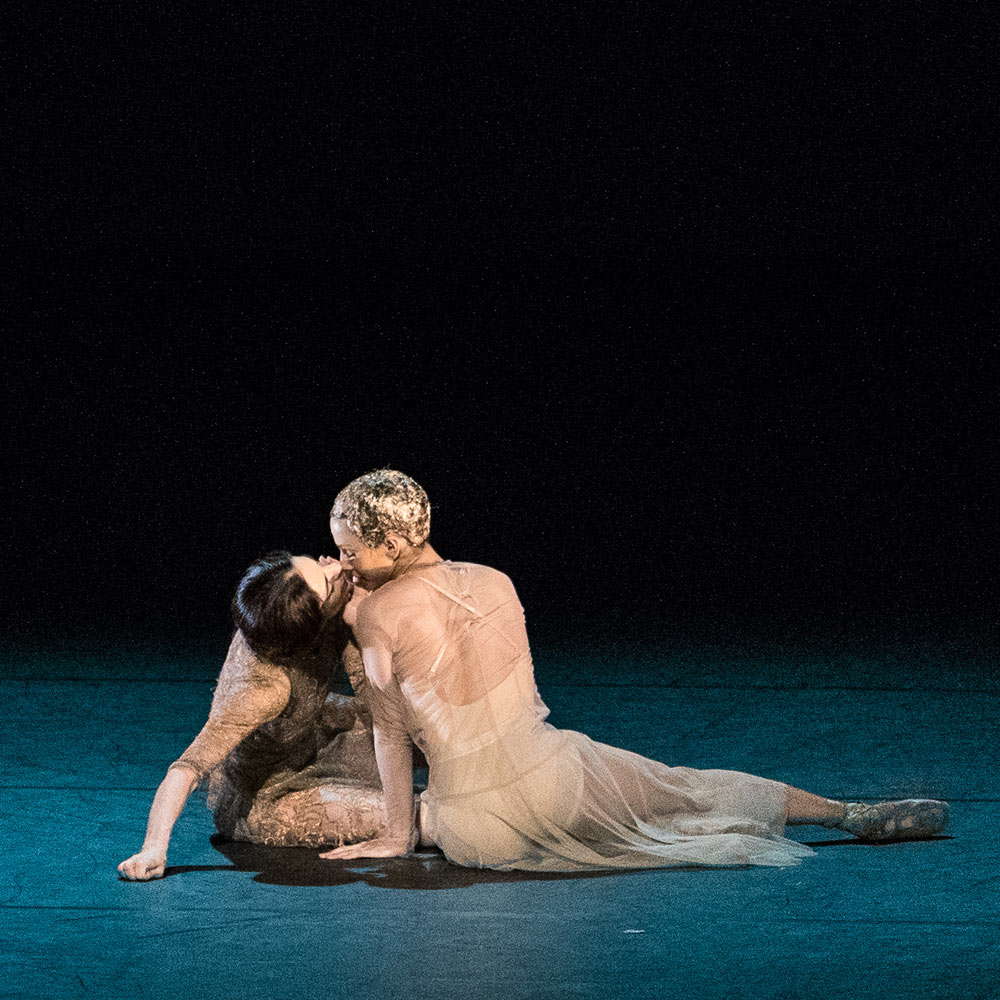
© Darren Thomas. (Click image for larger version)
As the shell-shocked, suicidal Septimus, Edward Watson’s performance was compelling. Watson is clearly a choreographer’s dream choice for a man in despair. (Not so, of course, when he’s The White Rabbit in Alice’s Adventures in Wonderland although the Rabbit is a touch anxious).
Max Richter’s score for Mrs Dalloway is sometimes meandering and often repetitive although it’s interwoven with a soundscape that perfectly depicts time passing, from the clattering of traffic and what sounds like horses hooves, to the recurring chimes of Big Ben, another marker that signifies the end of things. As Woolf wrote in Mrs Dalloway: “Big Ben was beginning to strike, first the warning, musical; then the hour, irrevocable”.

© Dave Morgan, courtesy the Royal Opera House. (Click image for larger version)
The aim of Woolf Works’ dramaturg, Uzma Hameed, was to make audiences feel that they were reading Woolf’s novel, but that would only work for those who have read Woolf’s works. Dragging out an old Mrs Dalloway paperback from the bookshelf, and reading it again, added much to my first viewing of the ballet although a re-reading of Woolf’s novel, Orlando, was no help at all.

© Darren Thomas. (Click image for larger version)
In Woolf Works second act, titled Becomings, Orlando’s narrative of time travelling and gender changing becomes a busy black and gold travelogue through space with fantastical laser lighting transforming the stage and auditorium into criss-crossed shafts of light including a rainbow moment. The highlight, a pas de deux in which Natalia Osipova has her one moment in the spotlight during the entire Royal Ballet tour of Australia, was over too soon. Due to casting – all the same as the productions in London – there are more opportunities to shine during the season of Woolf Works and The Winter’s Tale for Watson, Federico Bonelli, Beatriz Stix-Brunell and Steven McRae.

© Dave Morgan, courtesy the Royal Opera House. (Click image for larger version)
Virginia Woolf’s suicide note to her husband, read by the actor, Gillian Anderson, brings Woolf Works back to the poignant place where the ballet begins. This final act, Tuesday, is not so much based on Woolf’s novel, The Waves, as it is on Woolf herself. And that means there’s a satisfying biographical link to Virginia Woolf in the first and final acts with Ferri playing the roles of both Mrs Dalloway and Woolf herself at a time when she makes the decision to die by drowning.
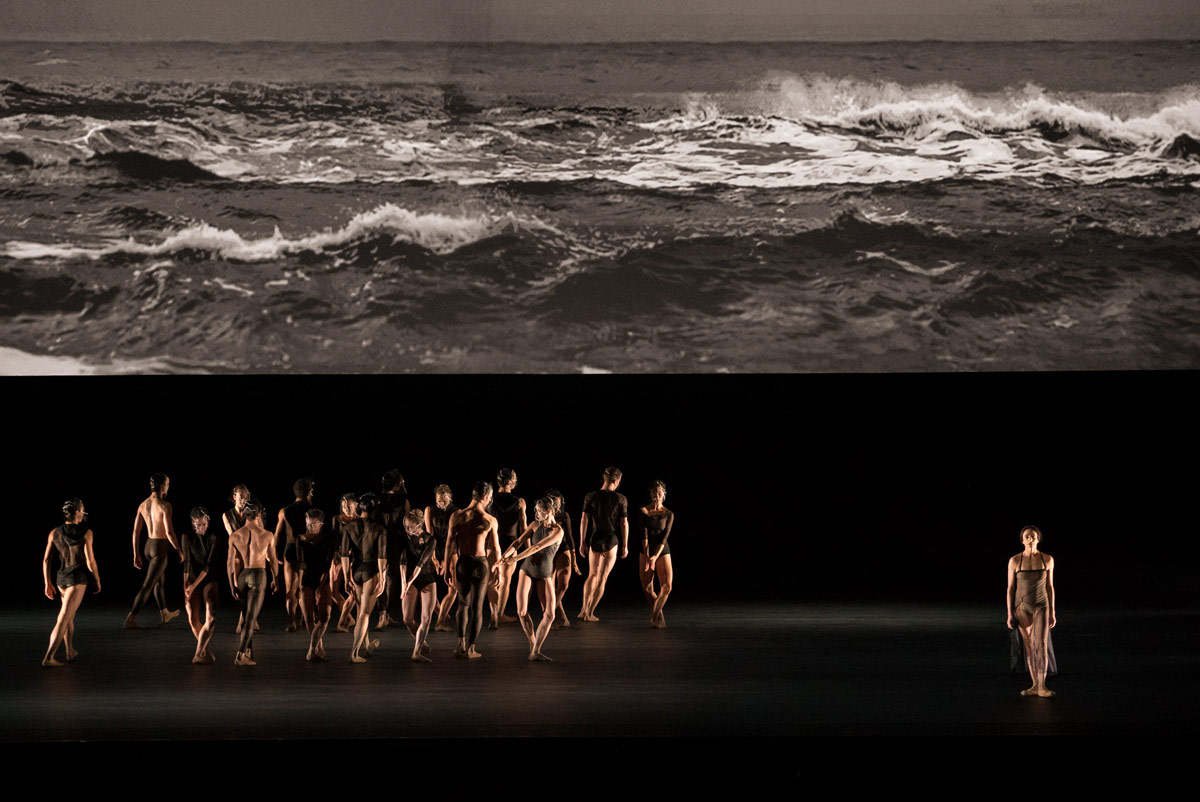
© Darren Thomas. (Click image for larger version)
In Tuesday – a reference to the day Woolf wrote her suicide note – the cast of 20 Royal Ballet dancers was supplemented by six young students – most of them from the Queensland Ballet school – representing the childhood days of the six characters in The Waves.
The slow moving tides of the sea, filmed by Deepres, and screened on stage, are mirrored by the dancers who emerge from the sea, becoming the sea itself. The last moment, in which Ferri is lowered to the ground, is both calm and disturbing as Ferri weaves her magic once again. McGregor is very fortunate to have an actor/dancer who carries Woolf Works and above all, is able to do justice to Woolf’s writing and remarkable life. In the The Waves, Woolf wrote: “Against you I will fling myself, unvanquished and unyielding, O Death! The waves broke on the shore”. These words are engraved on a plaque where her remains lie under an elm tree in the garden of her home.
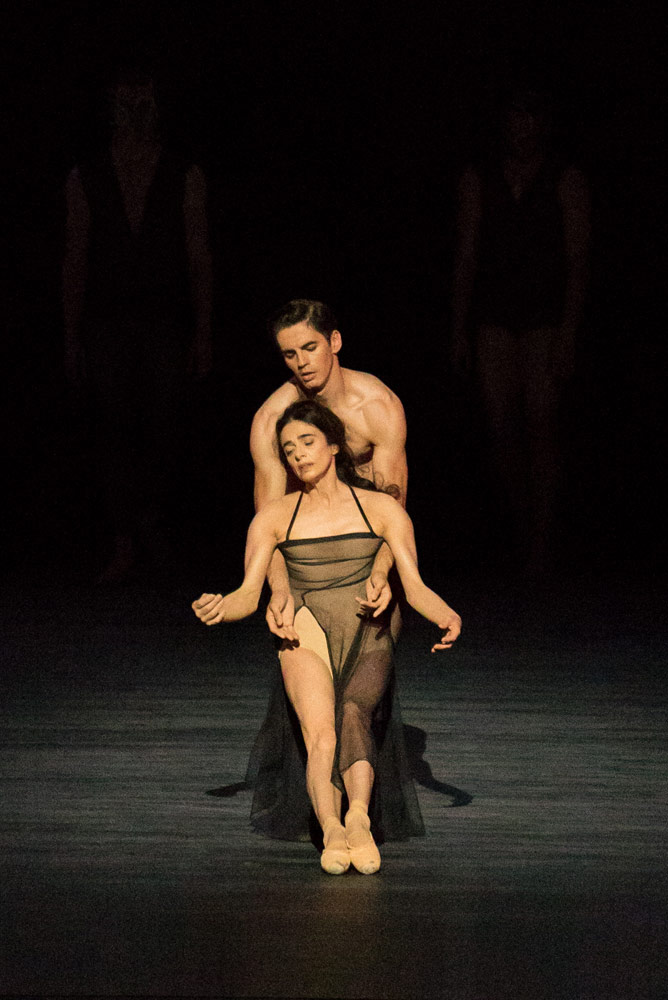
© Darren Thomas. (Click image for larger version)
Stories of the Bloomsbury Group have already been told in films, radio programs and more recently on a TV mini-series, but they’re seldom seen on stage and only once before in dance, with William Forsythe’s duet Woolf Phrase in 2001. Perhaps that’s because the Bloomsberries were all about words, words, words, something made clear at the start of Woolf Works when we hear Virginia Woolf’s voice speaking about the English language and see feathery written words fluttering down a scrim as the ballet begins.
The Bloomsberries would never know how, a hundred years on from their heyday, their words would become dance.
–oOo–
Although the Royal Ballet’s season has just begun, one thing is clear already; the standard of dancing is very high. This is their first tour to Australia since 2002, when Ross Stretton was director, and the company performed at the Capitol Theatre in Sydney. This time they’re at the Lyric Theatre of the Queensland Performing Arts Centre in Brisbane. The tour group of more than 150 people includes the chief executive of the Royal Opera House, Alex Beard, the conductor, Koen Kessels, and the choreographers Wayne McGregor and Christopher Wheeldon’s whose The Winter’s Tale, will have its first performance on 5 July, with a “gala performance” the following day.









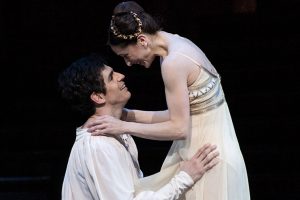
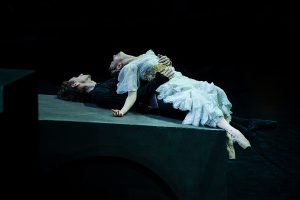
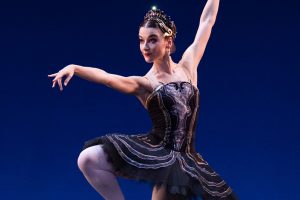
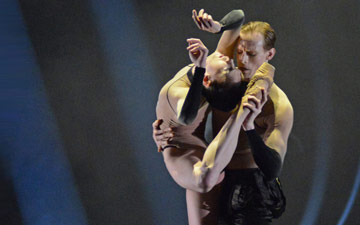
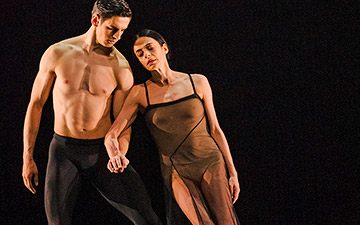
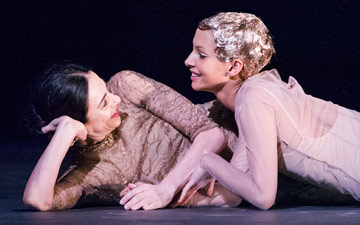
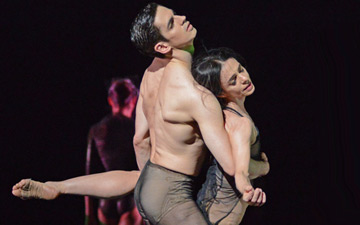
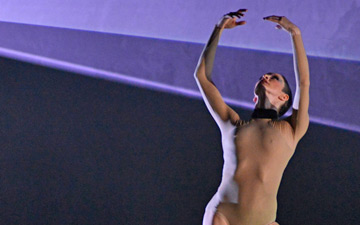
You must be logged in to post a comment.